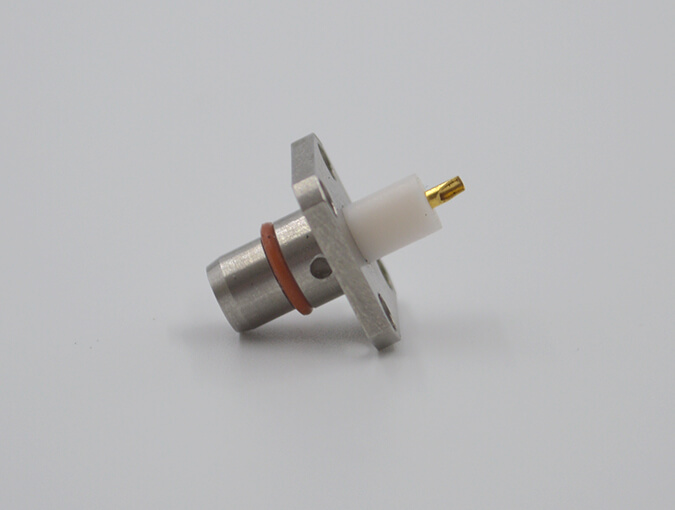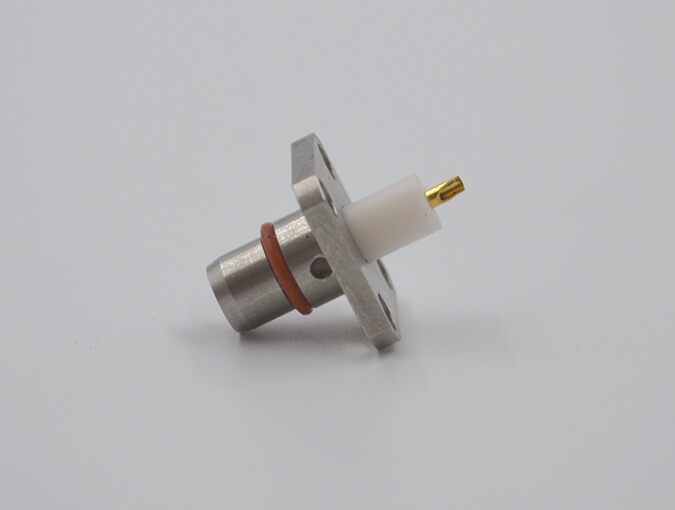Failure Cause Analysis and Reliability Improvement Method of N RF Connectors
17/09/2019As an important component of passive devices, N RF connectors have good broadband transmission characteristics and various convenient connection modes, so it is widely used in testing instruments, weapon systems, communication equipment, and other products. As the application of N RF connectors has almost penetrated into all sectors of the national economy, its reliability has attracted more and more attention. In this paper, the failure mode of the N RF connectors is analyzed, and how to improve its reliability is discussed.

When the N RF connectors pair is connected well, the outer conductor contact surface (electrical and mechanical datum) of the N-type radio frequency connector pair is tightened by the pulling force of the threads, thus realizing a smaller contact resistance (<5m_). The pin part of the inner conductor of the pin is inserted into the hole of the inner conductor of the pin, and good electrical contact (contact resistance 3m) between the two inner conductors is maintained through the elasticity of the wall of the pin. At this time, the step surface of pin inner conductor and the end surface of pin inner conductor are not tightened, but there is a gap of 0.1 mm, which has an important impact on the electrical performance and reliability of N RF connectors. The ideal connection state of N RF connectors pair can be summarized as follows: good contact of the outer conductor, good contact of the inner conductor, good support of dielectric support to the inner conductor and correct transmission of thread tension. Once the above connection state changes, the connector will fail. Next, we will start with these points and analyze the failure principle of N RF connectors, so as to find the right way to improve the reliability of N RF connectors.
1. Failure due to bad contact of the external conductor
In order to ensure the continuity of electrical and mechanical structures, the force between the contact surfaces of external conductors is usually very large. Taking the N RF connectors as an example, when the tightening moment of the screw is 135N.cm, the formula Mt=KP*10-3N.m (K is the tightening moment coefficient, K=0.12) can be used to calculate the axial pressure P0 of the outer conductor can reach 712N. If the strength of the outer conductor is poor, it may cause serious wear and tear of the connecting end face of the outer conductor. Even deformation and collapse. For example, the wall thickness of the outer conductor of the SMA connector is thinner, only 0.25mm. Most of the materials used are brass, with weak strength and slightly larger connecting moment. The end face of the SMA connector may be deformed by excessive extrusion and damage the inner conductor or dielectric support. Moreover, the surface of the outer conductor of the connector is usually coated, and the larger contact force will break. Failure of the coating on the end surface of the connection leads to an increase in the contact resistance between the external conductors and a decrease in the electrical performance of the connectors. In addition, if the RF coaxial connector is used in a bad environment, after a period of time, a layer of dust will be deposited on the connecting end of the outer conductor, which makes the contact resistance between the outer conductors increase sharply, the insertion loss of the connector increases, and the electrical performance index decreases.
Improvement measures: To avoid bad contact of external conductor caused by deformation or excessive wear of connection end surface, on the one hand, we can choose materials with higher strength to process external conductor, such as bronze or stainless steel; on the other hand, we can also increase the wall thickness of connection end surface of the external conductor to increase the contact area, so that the same connection moment is applied. In this case, the pressure per unit area at the end of the outer conductor connection will decrease. For example, an improved N RF connectors reduce the external diameter of its dielectric support from 4.1mm of SMA to 3.9mm and increase the wall thickness of the outer conductor connecting the surface to 0.35mm correspondingly, which enhances the mechanical strength and thus enhances the reliability of the connection. When storing and using the connector, keep the end face of the outer conductor connection clean. If there is dust on it, it can be cleaned by alcohol cotton ball. It should be noted that alcohol should not be immersed in the support of the medium when scrubbing, and the connector should not be used until the alcohol volatilization is completed, otherwise, the impedance of the connector will change because of the mixing of alcohol.
2. Failure due to bad contact of the inner conductor
Compared with the outer conductor, the inner conductor with smaller size and lower strength is more likely to cause poor contact and lead to failure of N RF connectors.
Elastic connections are often used between inner conductors, such as slotted elastic connections, spring-claw elastic connections, bellows elastic connections, etc. Among them, the slotted elastic connection has the advantages of simple structure, low processing cost, convenient assembly, and wide application. Therefore, this paper will take this as an example for analysis.
2.1. Insufficient fixation of the internal conductor
For assembly purposes, many N RF connectors: the inner conductor is divided into two sections at the dielectric support, and then connected by threads.
However, because of the smaller diameter of inner conductor, if the inner conductor is not fixed by glue at the thread connection, the connection strength of inner conductor is very poor, especially for some small N-type radio frequency connectors, such as 1.85 mm coaxial connector whose inner conductor diameter is only 0.804 mm, the strength can be imagined. Therefore, when the N-type RF connector is connected and disconnected several times, under the long-term effect of torsion and tension, the inner conductor thread may loosen and fall off, resulting in failure of the connection.




